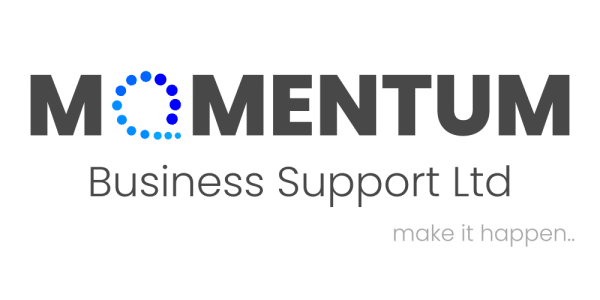‘Conveyer Belt’ Your Way To Saving Time

I recently worked on a project for a client, covering whilst a member of their team was away. She is extremely efficient, knows what she’s doing and never wastes time (I know this from working with her regularly)! And yet, whilst I was covering her work, I was around 30% quicker at getting the tasks done than usual.
I considered a number of things to try to understand this. Including:
The process – was I changing or reducing the number of actions taken to achieve the same result? .. No.
The amount of work – were the number of work requests fewer than those usually provided? .. No.
The time of day – considering that each person varies in productivity level depending on the time of day and other influencing factors? .. No!
So what was it??
When she came back from her annual leave, we did the usual handover and I took the opportunity to talk to her about my thoughts on the timing issue. What I discovered, (and she has since taken up!), is that we use a different method, mine evidently saving significantly more time.
So here it is: The method;
I call it my conveyer belt system, which will hopefully make sense as I explain..
When taking on any task, simple or complex, I always break it down into chunks. Usually with admin, you’ll have a number of different tasks throughout any given day and any one action will be repeated several times. E.g. Invoice processing, raising quotes, filing documents, organising emails, updating spreadsheets, and so on etc.
It’s highly likely that for any task that comes in you’ll do it as you go. I.e. Process that invoice, update the relevant spreadsheet, then reply to an email, process the next invoice etc. Whilst that feels productive because you’re getting through everything, it’s actually quite inefficient. You’re constantly having to go in and out of various files and systems, and your brain is having to focus on something new every 5 minutes!
If you consider for a moment, a factory. A product is created by going through various stages of a conveyer belt system, and each area of the conveyer belt focusses on one action. This is the most efficient way. It would be impossible for the labelling element to also design, create and package the product. And if it were possible, that one area of the machine would take considerably longer to produce multiple products at any one time.
So, to be as effective as possible, we need to adopt the same theory.
Still with me? Not quite? OK, let’s run through a couple of examples..
Example1 – Invoice Processing:
Firstly, it’s likely you’re going to receive more than one invoice per day, week or month. So, depending on the frequency, you want to choose one time of day, one day a week, or one day a month to process all of your invoices together. This is the first stage of your conveyer belt – working out what needs to be actioned and when.
Next, breakdown the task of processing an invoice. What actions are required? You’ll need to;
- Open/ load/ view the invoice
- Save it to your files
- Add it to your accounting software
- Possibly add it to a task list or other spreadsheet for internal use/ reporting
- Get payment approval
- Pass it for payment
That’s quite a list just for one small job. I know each of those elements won’t take long, maybe 30 seconds to a minute, but that means each invoice can take up to 6 minutes to process! It also means that for each one, you have to move your brain through 6 different activities, adding on a few more precious seconds.
Getting back to our conveyer belt theory. If you were to instead action all invoices, within each stage, at the same time, think how much time and brain re-engagement effort that would save! Opening all (10 let’s say) invoices one after the other, then running through and saving them all, adding each to the accounting software, etc. etc. Until all actions are complete across your entire conveyer belt.
After the first one, this brings each ‘new’ 30-60 second action down to 20 or 40 seconds because you’re no longer having to think or work so hard on each section. Each action becomes a brief habit in that moment of time. And suddenly you’ve gone from 1 hour to completely process 10 invoices, to only 40 minutes. Across an entire day, you’ve saved almost 2.5 hours!! Just think what else you could be doing with that time.
Example 2 – Organising Emails:
If you’re anything like me, by the end of the day your inbox can start to look a bit messy and needs a good sort out ready for the next! You keep articles or newsletters you want to read, but haven’t and possibly won’t get round to. You have important emails that no longer need actioning but do need to be saved or filed. There’re junk emails you’ve skipped over in a hurry to get to more urgent matters. There’re non-urgent emails that need a response you haven’t gotten round to yet. And a number of other wonders in between!
Following a similar approach to the above, to get through this as quickly and efficiently as possible, we need to adopt the ‘conveyer belt’ method. Start by breaking down the types of emails you have;
- Urgent – needs a reply
- Non-urgent – but still needs a reply
- Information only – need to review but no reply required
- Informative – articles, newsletters, offers etc.
- Junk/ spam – Why am I still getting these!!!
Then, for each type, consider the actions required (and the priority). Work through each email type (not each email, each type). For example, all of the urgent – needs a reply emails. Once you’ve done one, your mindset will be focussed on appropriate wording and responses, so doing the next and the next will get easier and easier. Follow this with the non-urgent – needs a reply emails. They might not be urgent, but whilst your brain is in the right gear, get them done. It will take less time overall.
If you have emails that need filing out of your mail system, do them all at once. If you’ve decided that you want to get rid of all the newsletters from ‘products are us’ (because you’re just not going to get round to reading them), do a search, pull them all up at once and delete them all together. Don’t spend time unnecessarily running through each of your emails to find them.
Find all of your junk emails and get into a rhythm – opening each one, unsubscribing and then deleting it. And so on within each area of your emails.
To summarise:
Your whole day, week, month or even year can be broken down into chunks of the work, tasks and actions needed – areas of time that can be managed dependent on the frequency of the task required. Start there. Then once you’ve figured that out, you can focus on the individual tasks and the actions necessary to complete them. From there, you can set up your ‘conveyer belt’ system. Good luck!
Thank you for reading our blog, I hope you’ve found the ‘conveyer belt’ idea useful. If you need any help or want to chat through this idea in more detail, please get in touch, we’d love to hear from you.
Tel: 01903 688789. Email: makeithappen@mbsmih.com.



